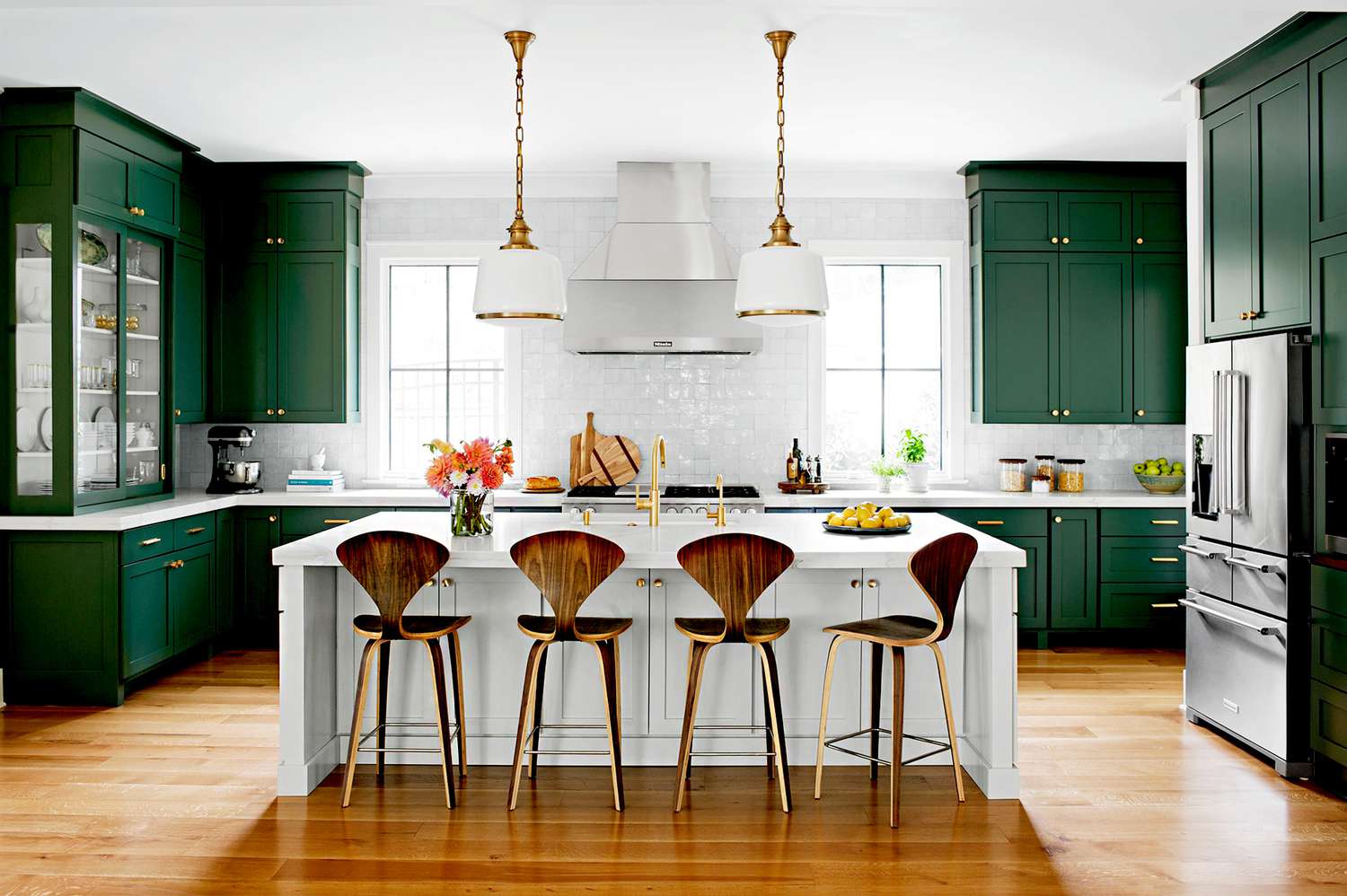Source: Better Homes & Gardens
Great Kitchen Design starts with careful planning:
- Use ergonomic kitchen design principles
- Keep things practical as well as beautiful
- Ensure accessibility of cabinetry, appliances and work surfaces
- Always keep your lifestyle in mind
- Aim for a timeless kitchen design that won’t age while adding value
By using these 5 points as your guideline, you’ll be well on your way to an inspiring kitchen design that is an asset to your home! Before going deeper into the details, let’s start with an overview and some fantastic pointers from designer, Julie Khuu.
1. Ergonomics Explained
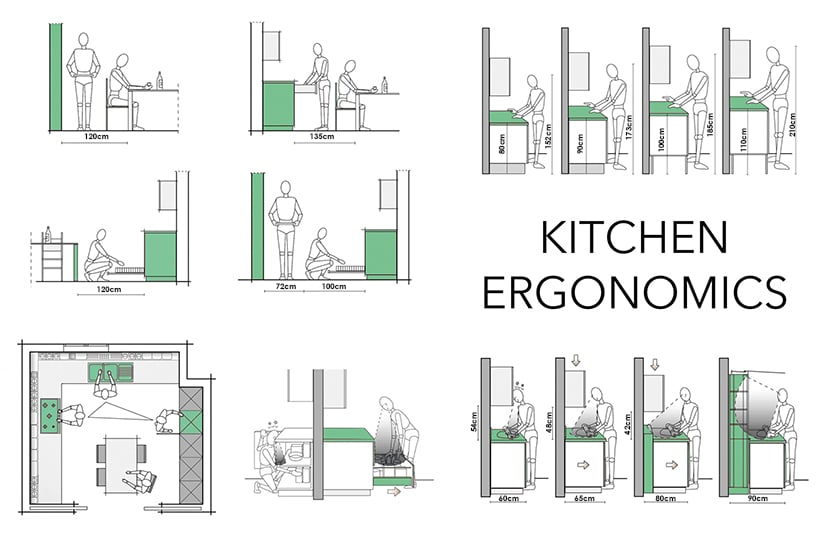
Source: Charenton Studio
You have undoubtedly heard this term before. It’s a fancy way of saying that everything has been correctly placed and is correctly proportioned to allow for maximum efficiency. In kitchen design, this translates into a few points:
- The Golden Triangle: This term was developed in the 1940s to minimize unnecessary movement in the kitchen. It proposes the ideal dimensions between the 3 hubs in the kitchen: the fridge, the oven and the sink. No leg of the imaginary triangle should be less than 1.2m and more than 2.7m long and there shouldn’t be any object obstructing the flow between the hubs.
- Heights and Depths: Standard countertops should be at a height of 900mm and tables at 740mm. Overhead cabinets should be reachable with the highest point being less than 1580mm and higher shelves being used for rarely used items. The maximum depth of a low cabinet should be 660mm to enable you to reach the back.
- Clearance: The width of walkways should be a minimum of 1050mm, which will allow clearance for the fridge, oven and cabinets to be opened.
Our definitive Beginner’s Guide to Kitchen Layout has loads more information on making the most of the space that you have.
2. Practical Kitchen Design
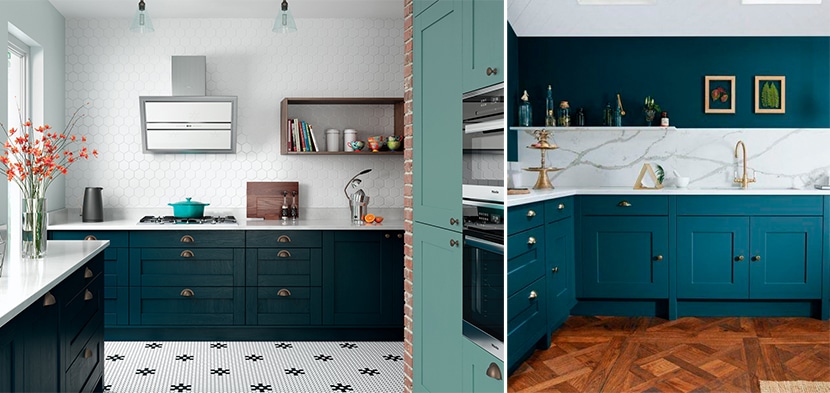
Source: Kitchen Depot & Living Etc.
A functional kitchen is one that allows you to do the job easily and effortlessly. This means that everything is within reach, is easy to clean and has all the necessary equipment to complete the task at hand.
- Finishes: Cleanliness is next to godliness – also in the kitchen! Make sure that you choose finishes that are hygienic and can be cleaned with minimal effort. Non-slip floors are essential for the inevitable spills.
- Waste: Bins are necessary items that should ideally be hidden away in a pull-out cabinet. Ensure that you have a covered bin close to your main workstation or island for food waste. And keep your recycling bins within easy reach to help you do your part for the environment.
- Lighting: Adequate lighting, both natural and artificial, are essential – especially over the main workstation and hob. See our post on natural lighting here.
- Ventilation: Aside from being a health and safety requirement, it also helps to eliminate strong food smells wafting through your home.
- Appliances: The number of kitchen appliances on the market is staggering. Make sure you allow enough storage space for smaller appliances and only purchase what you know you will use to avoid clutter.
3. Kitchen Design and Accessibility
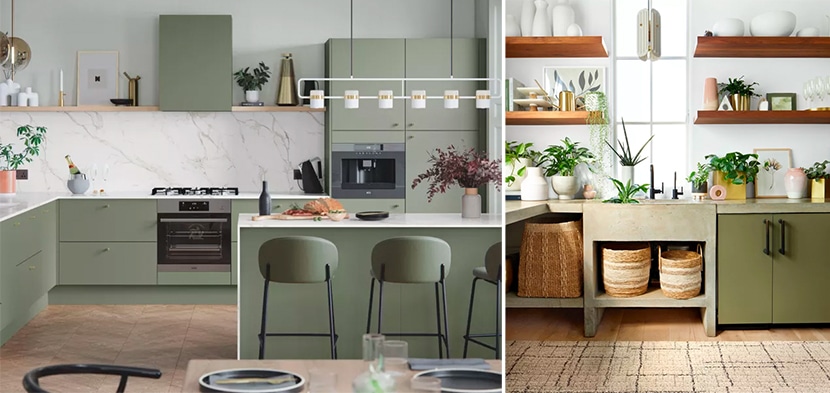
Source: Real Homes
Our kitchens are such hard-working spaces that it pays to carefully think about how you will be using yours. A considered kitchen design with everything where you need it will ultimately give you greater enjoyment of the room.
- Electrical Points: it really is worthwhile spending a bit of extra time on the planning of power points. Consider where you will be using the toaster, the blend stick, the kettle and the food processor and place the plug points accordingly.
- Pot Drawers: despite the name, these are not only for pots! They are a great way to store anything from plastic containers and coffee cups to pots, pans and larger items.
- Corner Cabinet Inserts: what used to be dead space in a kitchen becomes a great storage asset with an insert! Choose from carousels, pull-out drawers or extended shelving. This post explains the details of these great space solutions.
- Accessory Rails: keep counters clear without having to open a cabinet to get a spatula or kitchen towel. These rails can either be installed on the wall or directly onto the base of the upper cabinets.
For more great storage solutions, visit Häfele.
4. Kitchen Design for your Lifestyle
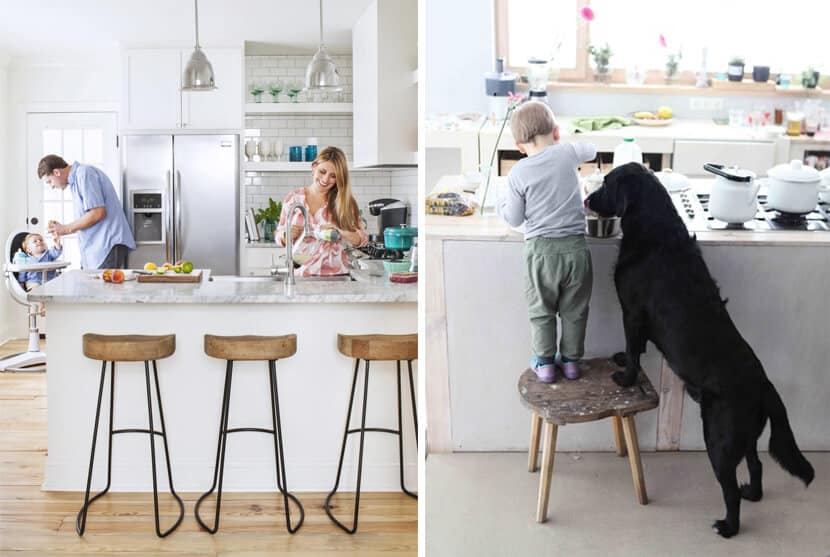
When considering your dream kitchen design, you should take into account all the different activities that you and your family use the room for. Every family is different, so it makes sense that your kitchen design is tailored to yours!
- Do you have kids and what are their ages? Safety is essential when it comes to younger kids while older ones might require a homework area. See our post on designing kitchens for little kids here.
- Is the kitchen used to enjoy meals? You can install a counter, breakfast nook or kitchen table for family mealtimes or informal suppers with friends.
- Do you entertain regularly? Then think about how many people will be working in the kitchen at the same time. If you have an open-plan kitchen, a separate scullery is also a great advantage for storing dirty dishes during parties.
- Do you have pets? Pets are often fed in the kitchen, so food storage, bowls and even sleeping baskets should get a dedicated place.
5. The Timeless Kitchen
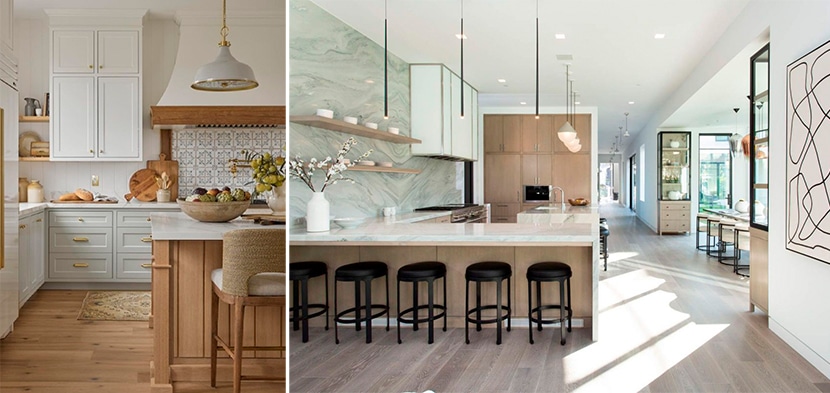
Source: Ashley Montgomery Design & Luxury Houses
A kitchen is a big investment and while trends come and go, you are likely to have your new kitchen design for at least the next 15-20 years. But don’t think of timeless kitchen design as old-fashioned or traditional. Timeless is any style or element that is not affected by changes in fashion.
- Style: This is probably the most important consideration. Choose a kitchen design that will go with the style of your house and that you will still love for years to come.
- Colour: While colour is not the most difficult thing to change, it can have a big cost implication. Neutral cabinetry can be dressed up with colour in the tiles and accessories and won’t date as quickly.
- Finishes and Fixtures: Go for the best that you can afford. It is an investment that will add to the value of your home!
Be sure to review this list when you design your new kitchen to make sure that you get the best possible kitchen for you and your family. [/fusion_text]
Book a Design Appointment
If you would like to get expert advice on designing a Kitchen for your family, why not Book a Design Appointment or Visit our Showrooms.
If you enjoyed our design ideas, subscribe for updates.
Get kitchens design ideas in your inbox.
Check out these posts for more Kitchen Design Ideas.
Most Popular
Dublin Kitchens: The 7 Latest Trends
The 12 Most Influential Kitchen Design Trends from the US
5 Tips for Designing Small Kitchens
6 Exciting Colour Palettes for Kitchens with Personality
6 of the Best Solutions for Corner Cupboards
10 of the Most Beautiful Kitchen Backsplashes
Types of Kitchens
In-Frame Kitchens – 5 Things You Should Know
What are Shaker Kitchens and Where are They From?
What Exactly are Hand Painted Kitchens?
The Top 10 Trends for Modern Kitchens
Design Ideas and Trends
5 Clever Ways to Increase Natural Kitchen Lighting
How Much Value Does a Fitted Kitchen Add to Your Home?
12 Must Have Celebrity Kitchens of the Rich and Famous
Families
10 Kitchen Design Tips for Families with Kids
6 Tips for a Kitchen for a Large Family
